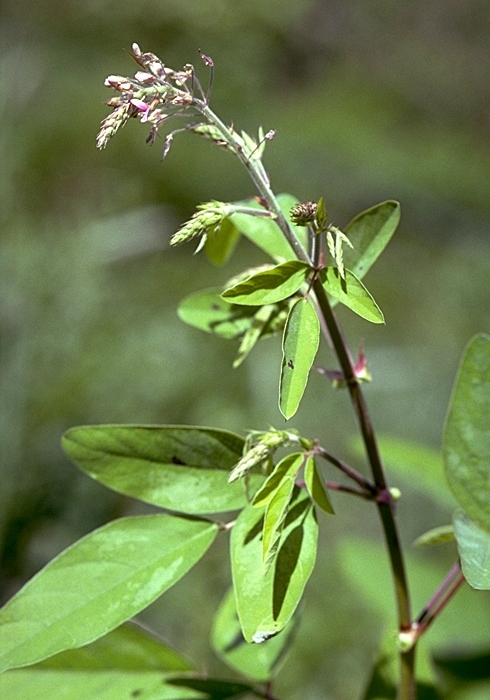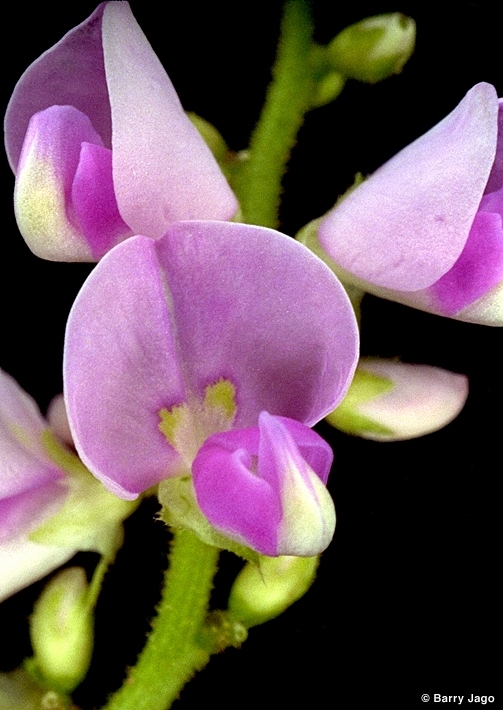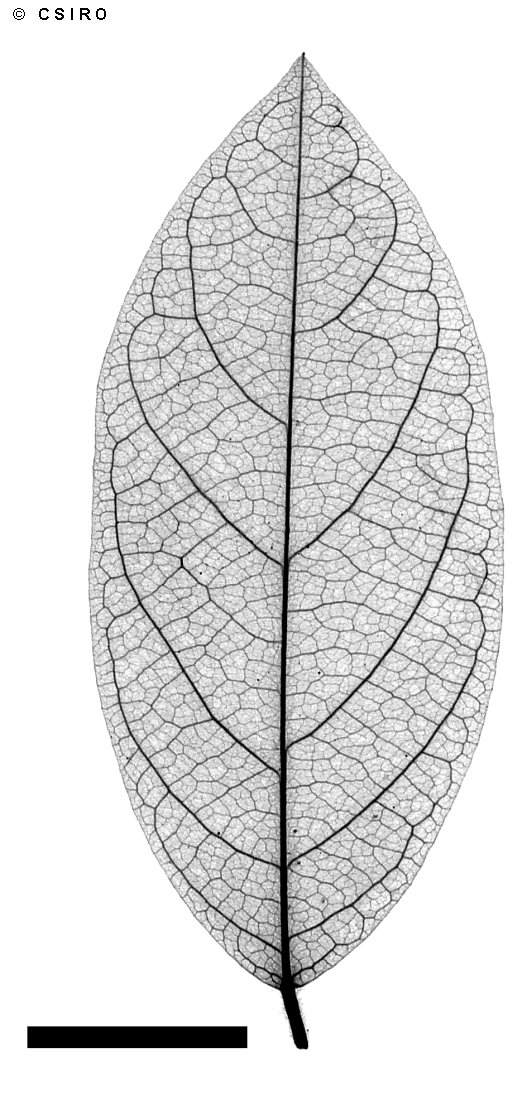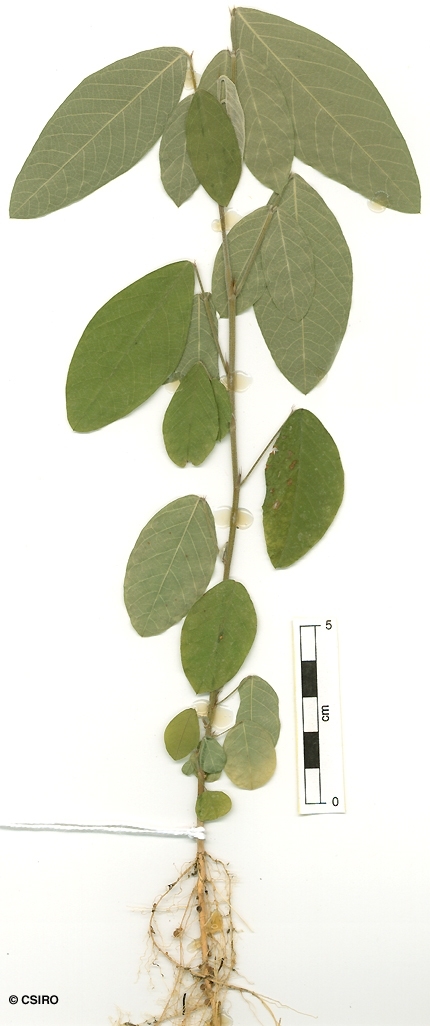Australian Tropical Rainforest Plants - Online edition
Desmodium nemorosum F.Muell. ex Benth.





Bentham, G. (1864) Flora Australiensis 2: 232. Type: Queensland. Brisbane river, F. Mueller; Pine river, Fitzalan, also in Leichhardts collection.
Wild Pea
Flowers and fruits as a shrub about 1 m tall but often flowers when only 20-50 cm tall.
Stalk of the middle leaflet about 0.6-1 cm long, much longer than those of the lateral leaflets which are about 0.1-0.2 cm long. Middle leaflet much larger than the lateral leaflets. Stipellae (about 2 mm long) present at the base of the leaflet stalks. Underside of the leaflets clothed in prostrate hairs. Stipules about 6-8 mm long.
Two calyx lobes fused almost to the apex. Calyx about 2-3 mm long, outer surface hairy. Corolla about 5-8 mm long. Stamens 10, the filaments of nine stamens fused to form a sheath with the anthers alternately higher and lower. One stamen completely free. Ovary hairy on the outer surface. Ovules about four or five.
Pods about 13-42 mm long, breaking up into 1-seeded segments which adhere to clothes by means of hooked hairs. Seeds about 5 mm long. Embryo green, cotyledons +/- kidney-shaped.
Cotyledons somewhat falcate, about 8-10 x 4-5 mm. First pair of leaves +/- orbicular. At the tenth leaf stage: stipules narrowly triangular, about 8-10 mm long, apex aristate. Middle leaflet about twice the size of the lateral leaflets. Stalk of the middle leaflet much longer than those of the lateral leaflets. Stipellae present at the base of the leaflet stalks. Leaflets clothed in prostrate white hairs. Roots smell like shallots (Allium ascalonicum) or beans (Phaseolus vulgaris). Seed germination time 14 to 17 days.
Occurs in CYP, NEQ and in south eastern Queensland and southwards to central coastal New South Wales, but apparently absent from CEQ. Altitudinal range from near sea level to 400 m. Grows in disturbed areas in rain forest, gallery forest and also in open forest. Also occurs in New Guinea.
This species is of no grazing significance. Hacker (1990).





